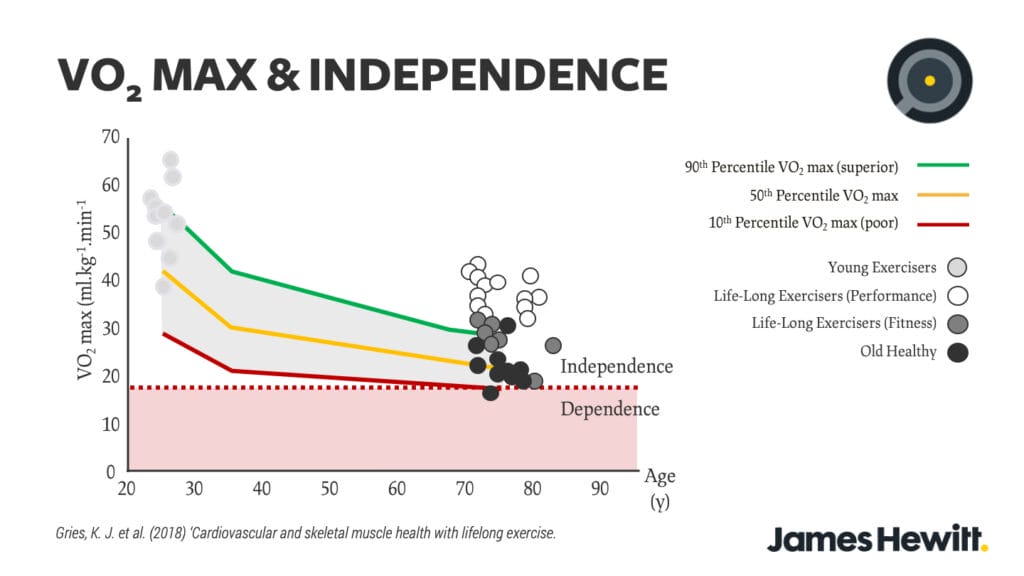I’ve written extensively about the benefits of physical exercise, but even though we all know how important it is, it can sometimes feel challenging to fit exercise into our schedule.
The challenges of exercising when routines are disrupted
The challenges of exercising regularly can be compounded during times that our routines are disrupted, and we don’t have access to equipment or space to workout. Fortunately, a growing body of research into ‘exercise snacks’ suggests that even very short exercise sessions (think 1-2 minutes), could still result in maintenance, and even meaningful improvements in aerobic fitness. These findings are particularly relevant when unexpected circumstances get in the way of regular exercise routines, and access to equipment and facilities are limited. Read on to find out how to put these research findings into practice.
Are short exercise sessions worth it?
I try to keep a consistent exercise routine of hour-long sessions, most days each week. However, this isn’t always possible, such as when work or family commitments take priority. It’s easy to fall into the trap of thinking that, unless you have at least 30-60 minutes to spare, exercise isn’t worth it. According to recent evidence, though, this does not appear to be true. Even very short sessions could result in a measurable impact.
Exercise snacks
The term ‘exercise snacking’ was coined back in 2014. A group of researchers were exploring whether very short exercise sessions could improve blood sugar control. The researchers recruited a group of participants who were insulin resistant. This means that the cells in their body were not responding as they should to the hormone insulin, which can lead to metabolic disorders such as diabetes (1).
The researchers assigned the participants to one of three different conditions:
- Traditional continuous exercise: 30 minutes of moderate-intensity walking (60% max. heart rate), before dinner).
- Walking snacks: 6 x 1-minute intense walking intervals (90% max. heart rate), interspersed with 1 minute of slow walking, 30 minutes before each meal.
- Walking + resistance snacks: combining 6×1 min intervals which alternated between walking and a resistance-band exercise, again with 1-minute recoveries, 30 minutes before each meal.
12-minute exercise sessions could improve insulin sensitivity
The exercise snack protocol only took around 12 minutes to complete (in contrast with traditional continuous protocol, which took 30 minutes). Despite taking less than half the time, the exercise snacks reduced 24 hour mean blood glucose concentration (an indication of insulin sensitivity) to a greater extent than the continuous protocol.
The authors concluded that brief, intense exercise snacks, before main meals, are a time-efficient and effective means to improve blood sugar control in individuals with insulin resistance.
What about healthy people?
For people who are insulin resistant, these findings should provide an incentive to get active during the day, particularly before mealtimes, even if this is just for a short period. But what about healthy people?
In 2019, another group of researchers investigated the effects of exercise snacks, but this time in a group of sedentary, but otherwise healthy young people (2). The premise of the study was that, even though we know that regular physical activity increases health and fitness, many people still do not exercise regularly. Most people report that they “don’t have enough time”. The researchers investigated whether quickly climbing a few flights of stairs each day would be sufficient to improve fitness, relative to a control group who maintained their sedentary lifestyle. The researchers measured VO2 max. to determine measure starting fitness-level and any changes that were associated with the training programme.
Why VO2 max. is so important
VO2 max. represents the body’s ability to take up and use oxygen, and it’s also a powerful predictor of a range of health outcomes. Basically, the more you can increase your VO2 max. while you are young, and the better you can maintain it as you get older, the longer you are likely to live, and the healthier you will likely be in old age. A study based on VO2 max. measures across age groups illustrated this quite elegantly. The graph below, which is reproduced from the study, describes how VO2 max values can predict the point at which someone is likely to cease to be independent, in later life.

In the exercise snack study among healthy people; the ‘intervention group’ was given an exercise snack programme, for six weeks. The plan was quite simple. The participants had to climb 3 flights of stairs (60 steps), at hard intensity, then take a 2-minute recovery. This equated to around 20 seconds of hard effort, as they quickly climbed the stairs, followed by 2 minutes of recovery, as they walked slowly back down, repeated three times. Three days each week, they repeated this exercise 3 times per day, with 1-4 hour breaks in-between each exercise. This resulted in around ~10 minutes of exercise on each of the three days.

Climbing the stairs a few times a day could make a measurable difference
After 6 weeks the exercise programme resulted in a 5% increase in VO2 max. values. While this improvement is small, it could still be meaningful, and it’s encouraging to see that measurable improvements in VO2 max. appear to be possible, even with the very low-volume programme that most people could fit into their day.

With exercise, every little helps
It goes without saying that, you shouldn’t take any of the advice about exercise in this article without first speaking to an appropriately qualified professional, to make sure you are fit and healthy enough. Assuming someone is healthy and has a safe space to do it, even a few short 20 second intervals of fast walking or stair climbing, repeated three times per day, could be an effective way to maintain or improve your cardio-respiratory fitness; even if you have to do laps of your living room. Additionally, if you are concerned about insulin sensitivity, timing these short exercise sessions for 30 minutes before main meals could be an effective way to improve blood sugar control. When it comes to exercise, every little helps.
References
1. Francois ME, Baldi JC, Manning PJ, Lucas SJE, Hawley JA, Williams MJA, et al. “Exercise snacks” before meals: A novel strategy to improve glycaemic control in individuals with insulin resistance. Diabetologia. 2014;57(7):1437–45.
2. Jenkins EM, Nairn LN, Skelly LE, Little JP, Gibala MJ. Do stair climbing exercise “snacks” improve cardiorespiratory fitness? Appl Physiol Nutr Metab. 2019;684(January):1–4

